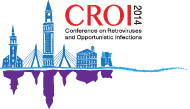Reports of a second baby possibly cured of HIV: uncertainty remains
24 March 2014. Related: Conference reports, Cure-related research, Basic science and immunology, CROI 21 (Retrovirus) 2014.
Richard Jefferys, TAG

One of the headline news stories during CROI 2014 related to a conference presentation by Deborah Persaud from Johns Hopkins University in which she described the case of an HIV-infected baby who was treated within four hours of birth and who now shows no detectable HIV after nine months of follow up.
The diagnosis of HIV infection was established by a positive HIV DNA test and detectable viral load measurements of 217 copies/mL in the blood (36 hours after birth) and 32 copies/mL in the cerebrospinal fluid (on day 6, sampled as part of a work up for meningitis). Crucially, the infant remains on antiretroviral therapy (ART) so it is as yet unknown if they have been cured.
According to news stories, doctors may consider interrupting ART if tests continue to show an absence of detectable HIV when the child reaches two years of age.
The recent report of viral load rebound after ART interruption in two adults in Boston who had no detectable HIV after receiving stem cell transplants emphasises the need to be cautious about assuming a cure has been achieved based only on virological assays. Many news articles have neglected to appropriately emphasise this point; in Donald G. McNeil Jr.’s piece in the New York Times he states there is now “little doubt that the treatment works” – but there is considerable doubt about this. An unproven, possible second case in addition to the Mississippi child (reported by Persaud at CROI last year and recently published) does not constitute scientific proof that early ART can be curative; rather, these cases raise the hope that it could be, at least in some instances, and provide justification for the conduct of a clinical trial currently being planned by the IMPAACT network.
McNeil Jr. also appears to misunderstand Persaud’s description of HIV antibody test results, writing: “because the most sensitive blood tests can find no virus capable of replicating, she describes the baby as ‘having sero-reverted to H.I.V.-negative.’” Seroreversion refers to antibody responses, not the “sensitive blood tests” used to look for HIV, and it is common for infants treated early with ART to lose HIV antibody responses even when viral genetic material remains detectable. Persaud’s description therefore does not represent some sort of special designation for this case.
The webcast of Persaud’s talk is now available on the CROI 2014 webcast site.
Source: TAG Basic science blog. Reports of a second baby possibly cured of HIV: uncertainty remains. (06 Mar 2014).
Ref: Persaud D et al. Very Early Combination Antiretroviral Therapy in Perinatal HIV Infection: Two Case Studies. 21st Conference on Retroviruses and Opportunistic Infections, 3-6 March 2014, Boston. Oral Abstract 75LB.
http://www.croiwebcasts.org/console/player/22149
